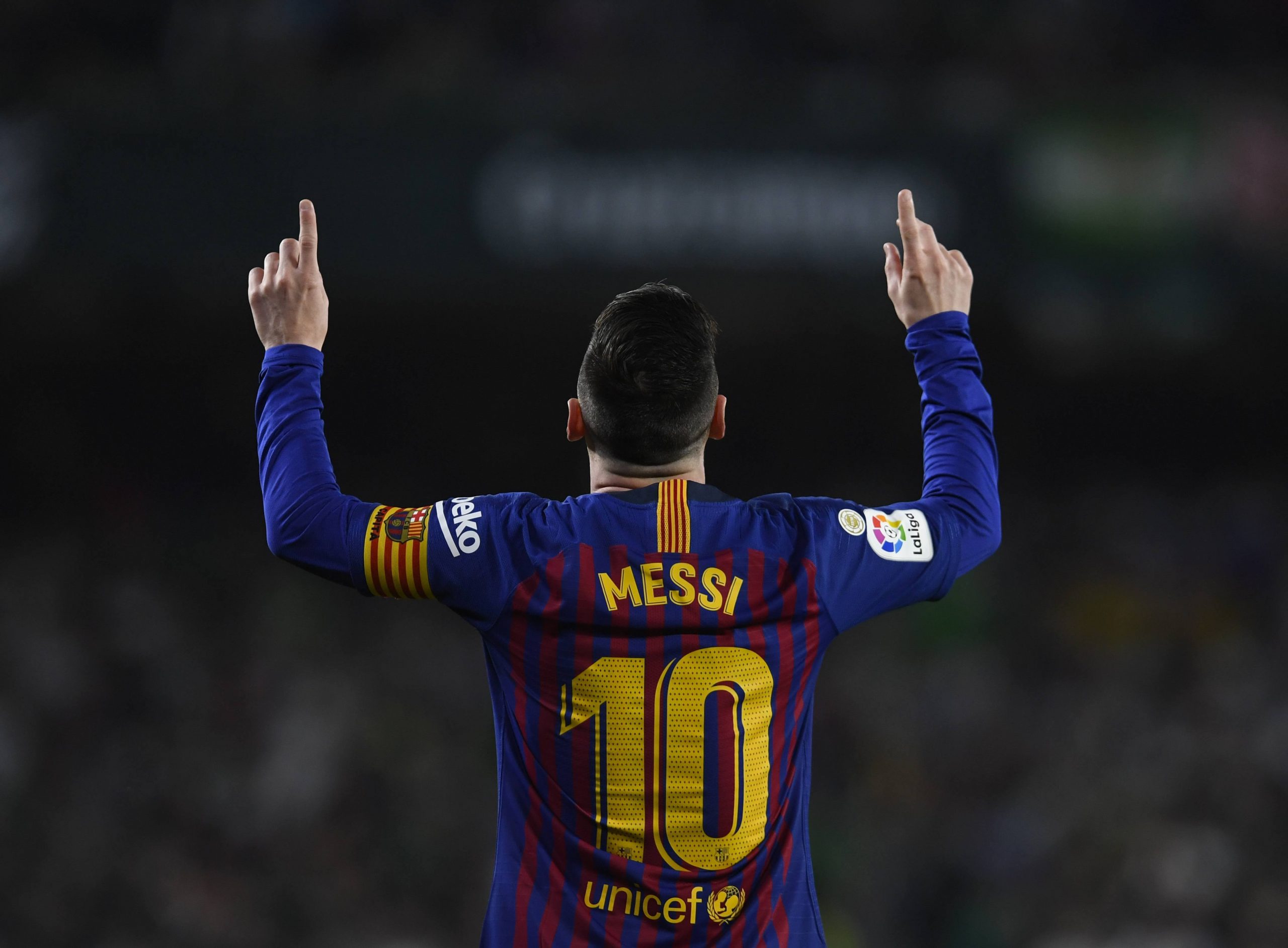We conclude our series on the evolution of Lionel Messi with a look at the Messi of recent seasons. We once again have Álex Delmás, ex-footballer, analyst for Barça TV and author of the book Messi Táctico, alongside us to assist in analysing the trajectory of one of the best players in the history of our sport.
Thanks to our Messi Data Biography we have data for all league matches involving Messi since his debut in 2004. For this series, Álex has picked out three significant matches in Messi’s evolution as a footballer.
We’ve already analysed the first iteration of Messi in the context of the March 2007 Clásico; and the second in the context of another Clásico, the famous 6-2 Barcelona win in May 2009. In this final part of the series, we’re going to look at a 4-1 win away to Real Betis (coached by the current Barcelona head coach Quique Setién) in March 2019.
Nick Dorrington (ND) (editor of StatsBomb’s Spanish-language site): Hi Álex. Can you tell me why you picked this match?
Álex Delmás (AD): I chose this match because here we see a more rounded, mature and complete version of Messi. It was between 2009 and 2012, in the era of Pep Guardiola, that I think the synergy between the level of Messi and the collective reached its highest point. From then onwards, Messi has continued to develop as a footballer at the same time that the collective level of the team has dropped off. And this is the perfect match to help us understand Messi’s new and current status within the team.
ND: In part two of this series, we talked about the Messi of the Guardiola years, and in this part we’re going to talk about his role in Ernesto Valverde’s Barcelona. But before we do that, can you give us a quick overview of Messi’s role in the period between Guardiola’s departure and Valverde’s arrival?
AD: Before Guardiola, he was primarily a player who operated down the right flank, as we saw in the first part of this series. With Guardiola, in the 6-2 match we watched last week, his position changed to that of a false nine, and with spectacular effect.
When Luis Enrique came in, and with the signings of Neymar and Luis Suárez, a few nuances were lost that meant the team didn’t interpret play as well with Messi as a false nine. There was less balance between playing between the lines and seeking to get in behind. In large part because the team lost players who were important in maintaining that balance, such as Samuel Eto’o, Thierry Henry and Pedro. So Luis Enrique placed Messi back on the right flank to form an unstoppable front three with Neymar and Suárez that yielded the second treble in Barcelona’s history.
ND: As we noted last week, in our database only the 2008-09 team had a better expected goal (xG) difference than that 2014-15 side.
AD: But Messi wasn’t the same player as when he had previously played on the right. Now, it was just a starting point from which to move infield and combine in central areas. As the years have passed that tendency has amplified, and it reached its peak under Valverde.
ND: We can see that in these maps of Messi’s attacking touches over the course of the last three seasons. He is now doing the majority of his offensive work in central areas and is much more involved in the construction of play in the midfield zone.
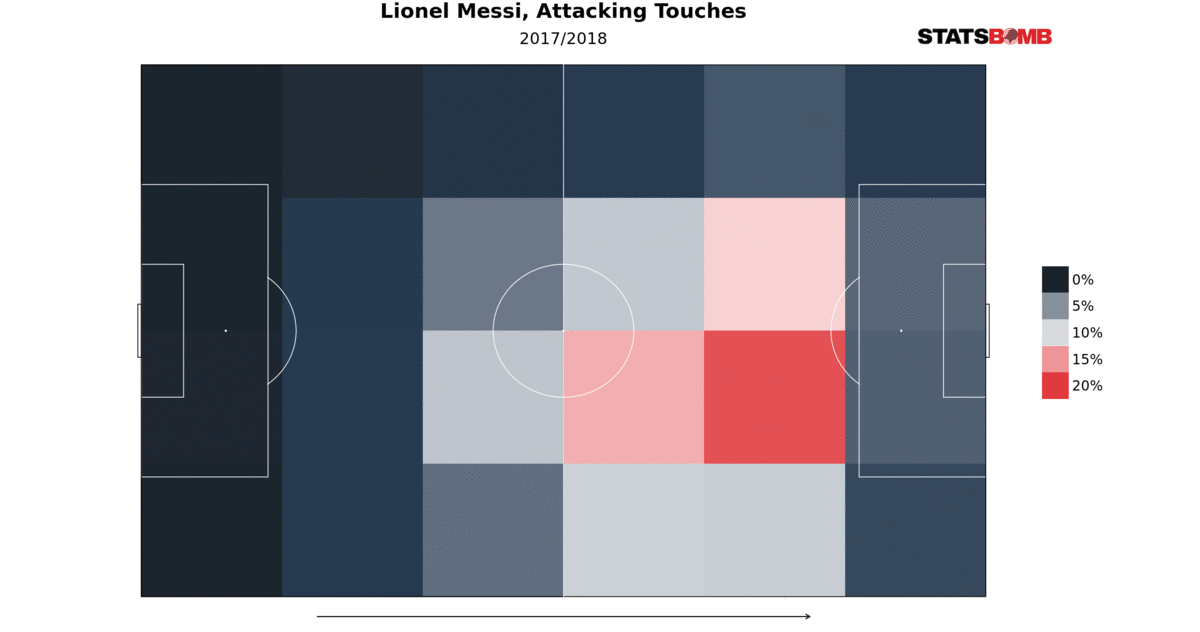
AD: Messi is increasingly more of a midfielder than a forward. He comes back to receive the ball in the centre of the pitch. In this match, Betis pressed intensely in the opening exchanges, and Barcelona needed Messi to drop back and help them advance the ball forward.
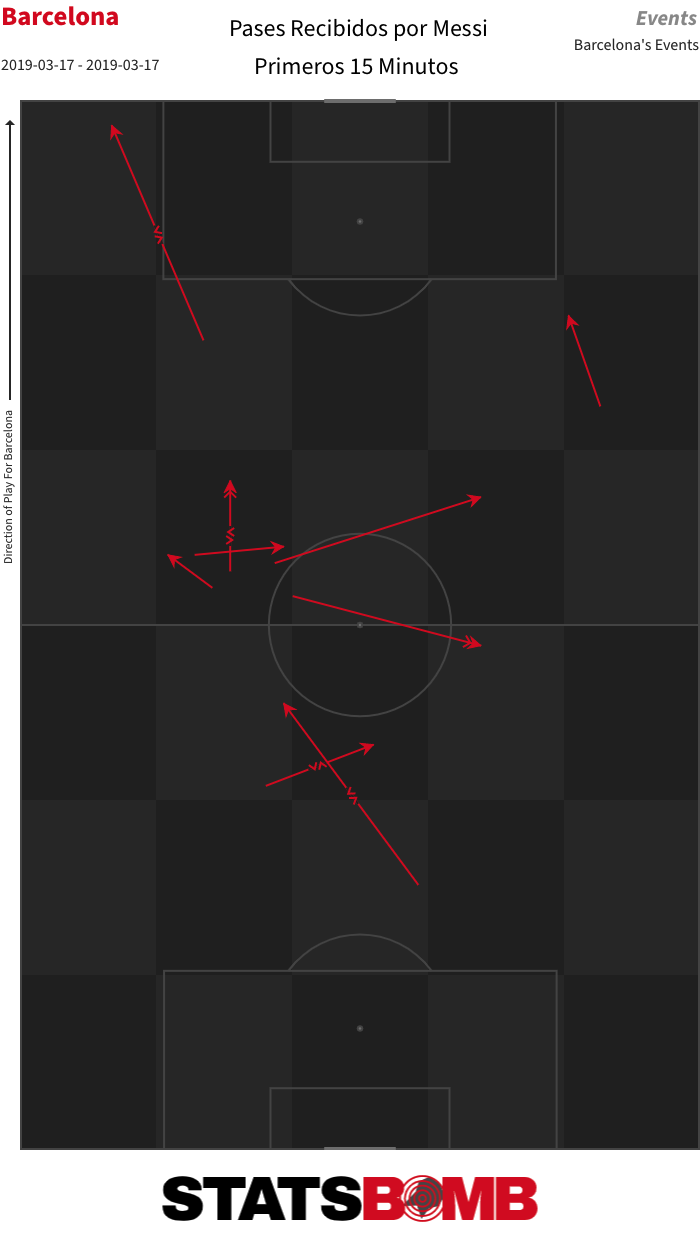
When Messi picks up the ball in deeper areas, he has a particular manoeuvre that he has developed over the years and which he also uses to give himself time to get into goalscoring positions, and that is pivoting movements with teammates further up the pitch. Suárez through the centre and Jordi Alba on the left are those with whom he has the best understanding in these movements. Also with Arturo Vidal, who makes runs ahead of him and returns one-twos.
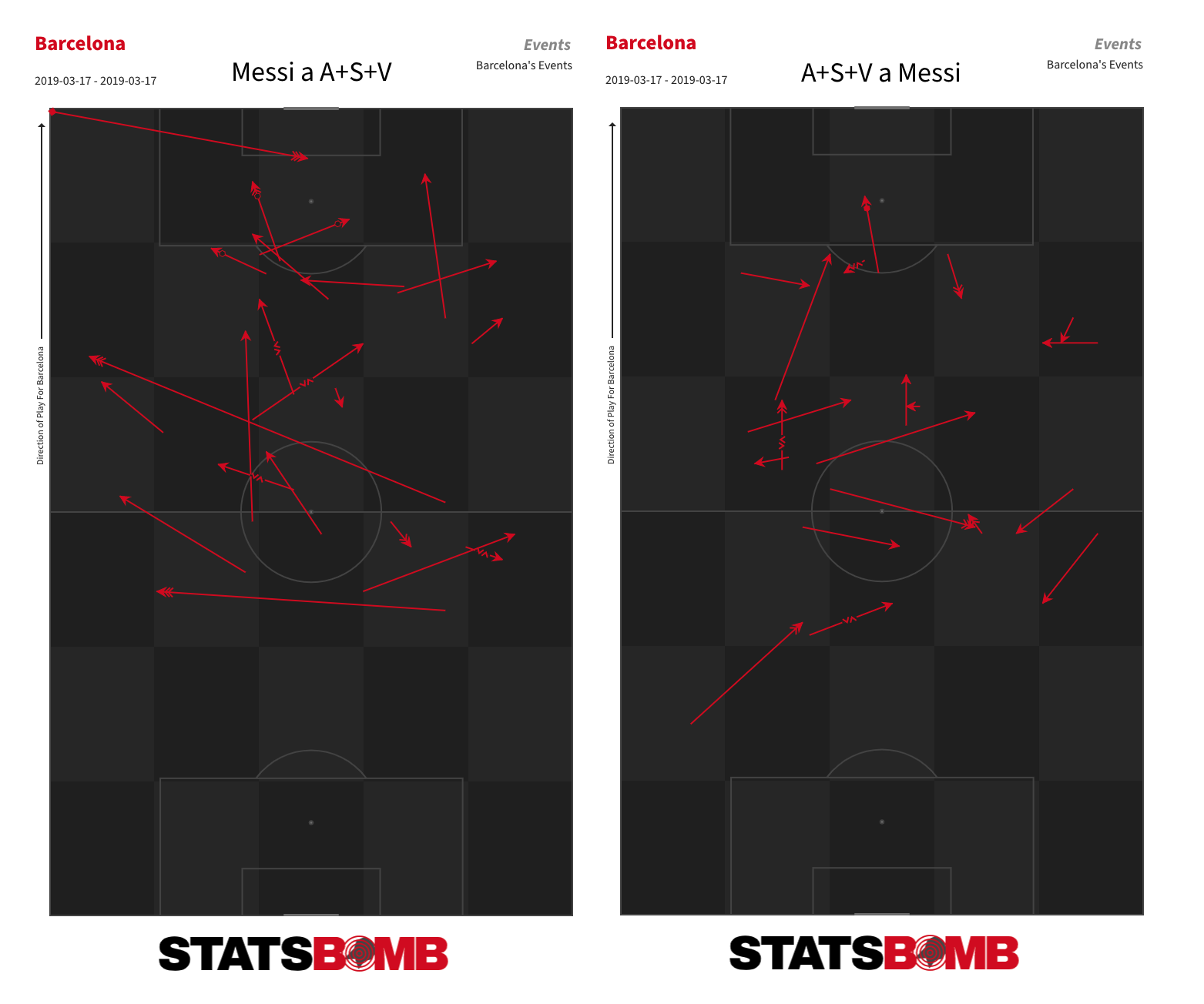
ND: Messi scores a hat-trick in this match. After a good start from Betis, it is him who opens the scoring in the 15th minute with an exquisite freekick. As you mentioned in the first part of this series, that is an aspect of his game he has improved as the years have passed.
AD: Yes. His freekicks are one of the most evident examples of Messi’s spectacular and progressive development. In the youth teams and when he moved up to the first team, he didn’t even think about stepping up to take them.
ND: Now, Messi is one of the few players for whom we have enough data to say with some confidence that he is a set-piece specialist.
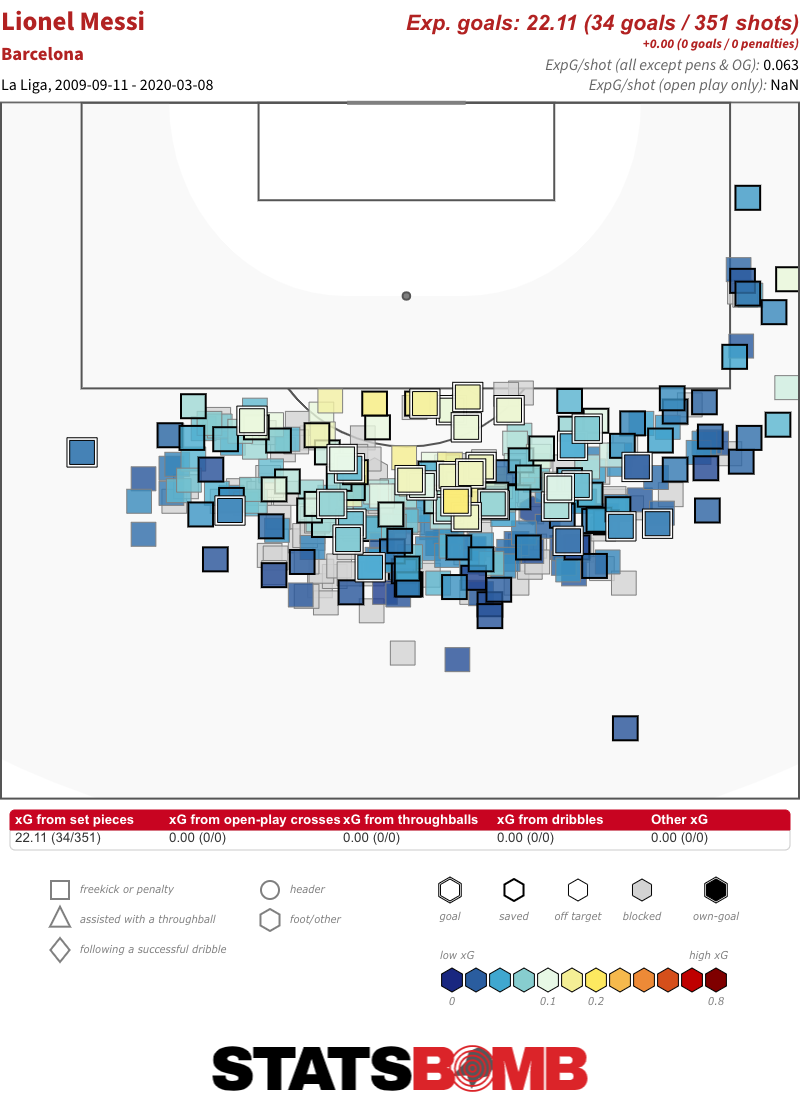
To what do you attribute this development?
AD: It is said that it was Tito Vilanova, someone who had a lot of influence on Messi, who encouraged him to take and practice freekicks. Messi got to work and soon started scoring goals of all kinds and types. He has become the best freekick taker in the world. His shots are both powerful and well-placed. In time, he has been able to unite those two aspects.
He is now so good at them that opposing teams have started to put additional obstacles in his way, like players on the posts or under the wall, but he still overcomes them.
ND: In fact, in Barcelona’s last match, Real Sociedad did this:
Curious La Real setup to defend Messi free kick pic.twitter.com/whBKUilMBd
— Samuel Marsden (@samuelmarsden) March 7, 2020
Anyway, in this game against Betis, Messi scores the second goal in first-half stoppage time, and then, with the points already won, completes his hat-trick with a delicious first-time lob from the edge of the area.
AD: For me, the best goal of 2019.
ND: But he didn’t just provide the goals. He also set up more chances than any of his teammates.
AD: Messi has become so transcendental that he carries pretty all of the team's attacking weight. Excessively so, given that all of the danger comes from him.
ND: We can see that in this graphic that shows the distribution of xG and xG assisted (xGA) between Barcelona’s squad members, first in 2008-09 and then in 2018-19, the season of this match. The distribution is a lot more even in 2008-09.
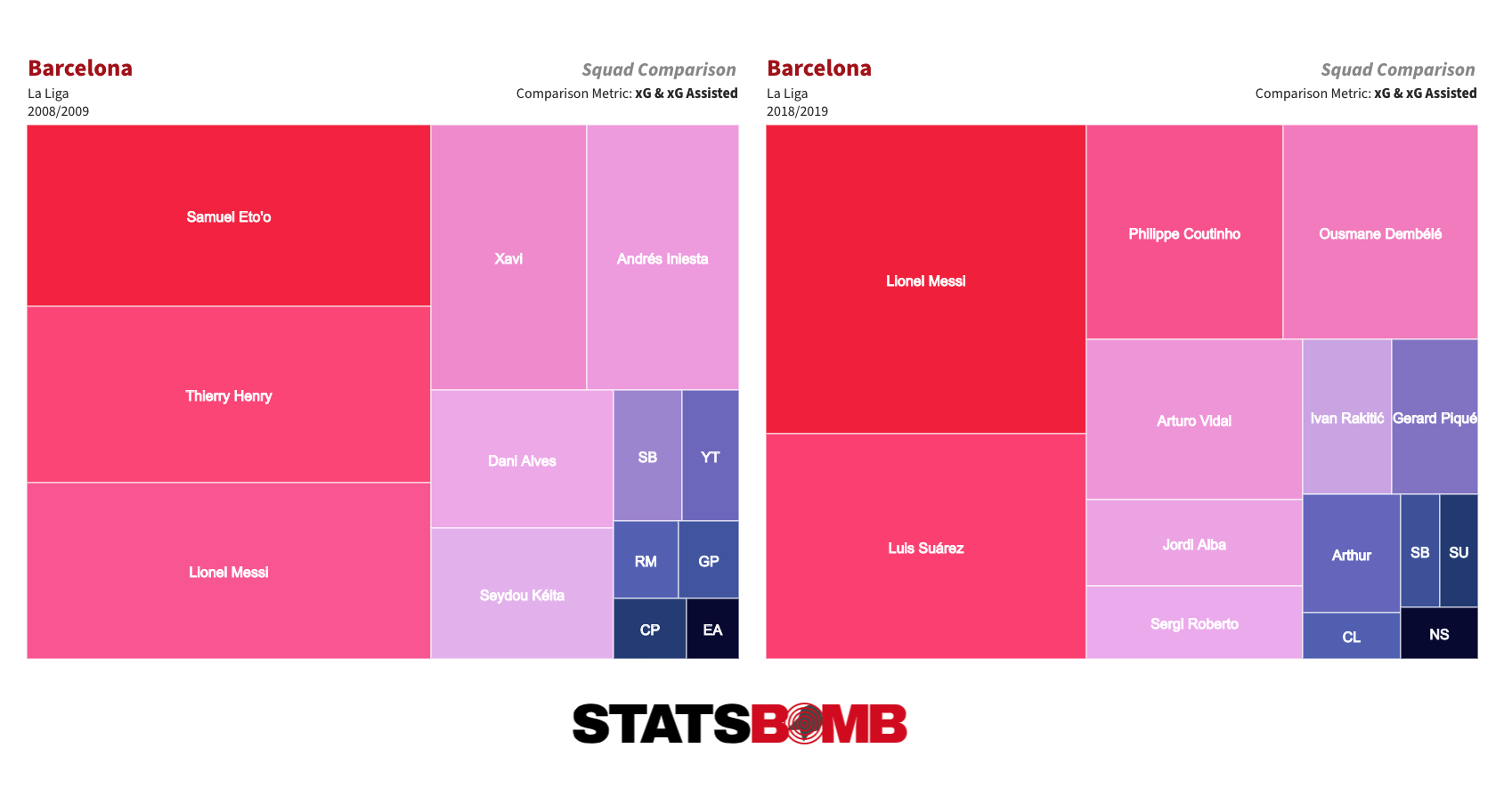
There are a number of other ways to try and measure the importance of an individual player to their team’s attack. It isn’t a perfect metric by any means, but one that does have a degree of utility is their usage rate. In basic terms, a player’s usage rate measures the percentage of their team’s attacks that end, for good or bad, at their feet.
In each of the last three seasons, including this one, Messi has led La Liga in this metric. In 2017-18, 18.8% of Barcelona’s attack ended at his feet. The figure was 21.2% last season, and has remained pretty much constant this season.
But it isn’t just in the crystallisation of attacks that Messi dominates this team. He also has a fundamental role in ball progression.
Here are two scatter graphs that plot open-play passes into the penalty area against deep progressions (carries, dribbles or passes into the final third). First, for the 2008-09 season.
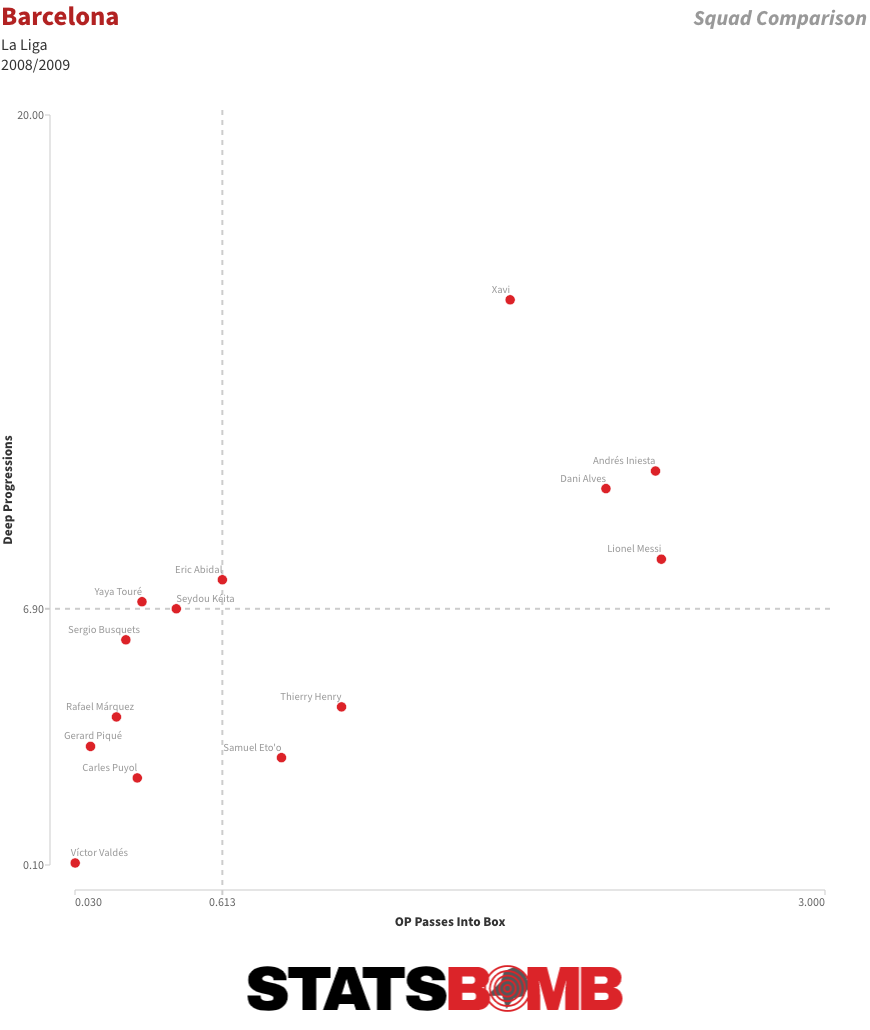
In this one, we can see that Messi leads the team in passes into the penalty area but it is Xavi who carries the weight of ball progression into the final third, with Andrés Iniesta and Dani Alves also more involved in that task than Messi. Now, for the 2018-19 season.
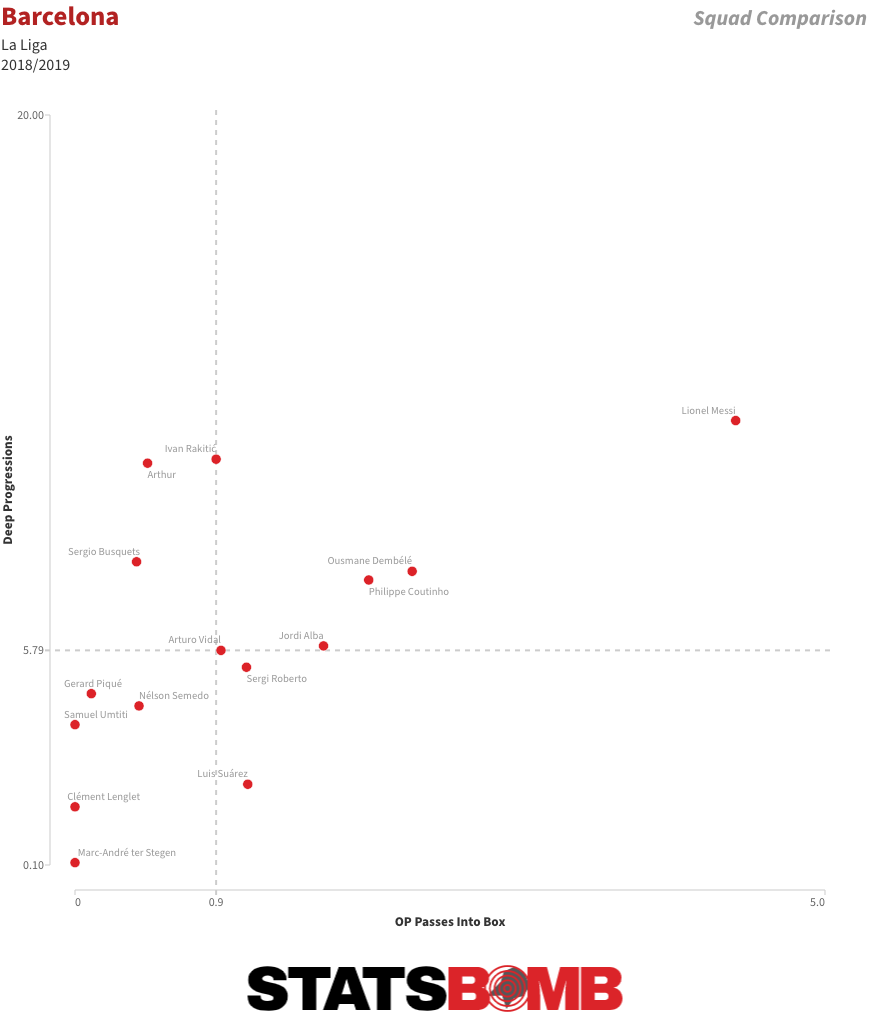
These days Messi does everything, and this match is the perfect example. He was the Barcelona player who played the most successful passes, who most often moved the ball into the final third, who played the most passes into the area and who carried the ball more often and over greater distances than any of his teammates. Has there been too much dependence on Messi in recent seasons?
AD: Yes. It has often been the case that there has been too much dependence on Messi. To explain it another way, there have been moments when they haven’t been able to benefit from the extraordinary power of Messi because they’ve relaxed and let him do everything. And that has led to the team no longer applying certain automatisms.
ND: Could you explain what you mean by automatisms?
AD: An automatism is a series of coordinated movements that a team uses to gain an offensive or defensive advantage. An example would be having two wide forwards who are permanently positioned out wide, like we saw in Guardiola’s Barça. That is an automatism that helps create space infield. Or to have one of the full-backs stay back and position himself infield while the other moves forward into attack. Barça no longer apply some of these, like positioning the three central midfielders close together in a triangle shape, like the constant width from the wide forwards, like the off-ball runs of the two advanced central midfielders into the area... small details without apparent importance but that are decisive at the highest level.
ND: This trendline of Barcelona’s xG and xG conceded (xGC) from Guardiola’s time to the present day (utilising a 15-match rolling average) shows the relative drop off in attacking output in recent years.
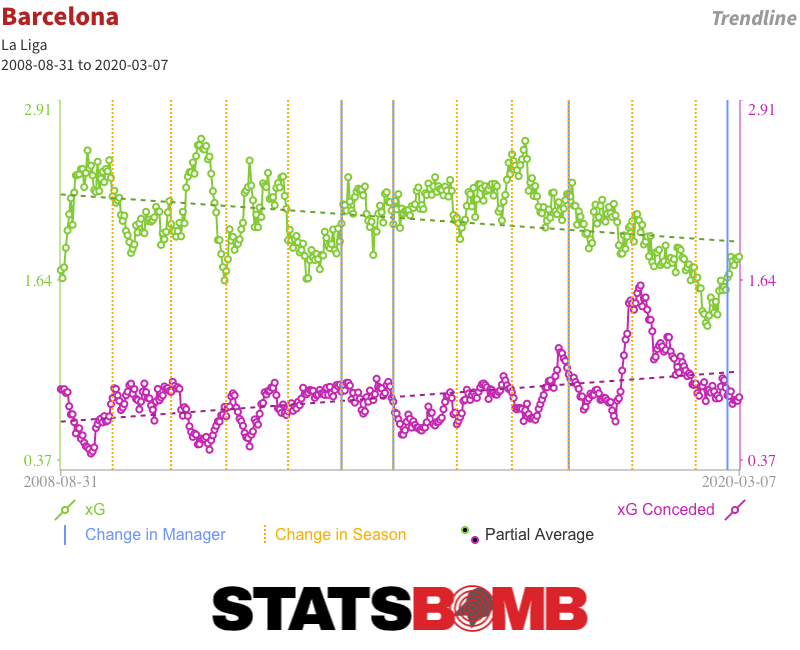
The club continue to enjoy success in La Liga, but they’ve discarded certain elements of their previous style and their reliance on Messi to solve everything has perhaps hurt them at a European level.
What do you think has caused this slight change in approach (I say slight because in the context of La Liga, Barça continue to have a profile that is distinct from that of the majority of teams) over the last few years? The coaches? Or is it a natural development given the departure of players like Xavi and Iniesta, two of Messi’s key accomplices?
AD: It’s true. The change is palpable even though it isn’t extraordinary given that Barça continue to be a team who have a high share of possession and who consistently seek to generate attacking football regardless of the situation or opponent. But as I said before, all factors have an influence at the highest level.
I think the change is down to various factors and they are all equally important.
One of those is the coach. Guardiola, Luis Enrique and Valverde are all great coaches but from my vantage point, Guardiola has a special gift for tactics, and especially for hitting upon offensive solutions within the framework of positional play. He is the best possible coach to apply positional play because he practiced it for almost the entirety of his playing career at Barça and also worked under Johan Cruyff.
As is logical and normal, each coach introduces their own nuances to a particular style of play. Luis Enrique exchanged some of the patience in build up play for quicker attacks. It is also worth noting, however, that with such a potent front three, he had to base his team around them. The team stopped doing certain things, like the insistence on circulating the ball, although many other positive elements were preserved.
Valverde decided to try and make the team more robust and applied certain nuances towards that aim. He pulled Ivan Rakitic back closer to Sergio Busquets and so had one less midfielder further up. The team dropped back more readily.
The second factor is the natural evolution of the squad. Over time, and bit by bit, vital players have departed. Players like Carles Puyol, Pedro, Alves, Xavi and Iniesta. In the end, football is about the players.
Finally, Guardiola’s team were the pioneers in applying pressing, attacking football. When a team are a pioneer, they are more difficult to detain. As the years have gone by, opponents were able to develop mechanisms to detain certain aspects of their play.
ND: Okay Álex. First, I want to say thank you for all of your contributions to this series. But I I also have one more question. Across these three matches, we have seen three distinct iterations of Messi. Will there be a fourth between now and the end of his career?
AD: I think so, and I think it will be the one that carries him through the final part of his career. An iteration in which he will probably be less explosive but still just as decisive. I am sure he will become a bit more of a passer and that his goalscoring numbers will drop off slightly, but I also don’t think that will be from a more withdrawn position but simply with full freedom of movement.
But Messi will never stop surprising us! And in the meantime, we can continue to enjoy the best player in the world, perhaps in history.
Thanks to you, to StatsBomb and to the readers. It has been a pleasure to participate in this series.
